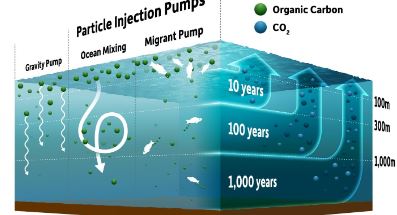Ocean Carbon Dioxide Removal: A Potential Climate Solution?
The ocean, a vast and dynamic reservoir, has long been a crucial ally in mitigating climate change by absorbing a significant portion of anthropogenic carbon dioxide (CO2). As the urgency to address climate change intensifies, scientists are exploring innovative strategies to enhance the ocean’s natural carbon uptake capacity. Ocean carbon dioxide removal (CDR), a nascent field with immense potential, aims to harness the ocean’s vastness to sequester atmospheric CO2 and potentially reverse the course of global warming.
The Urgency of Carbon Dioxide Removal
Current climate projections paint a grim picture, with global temperatures expected to exceed the 1.5°C threshold set by the Paris Agreement in the coming decades. To avert the most catastrophic consequences of climate change, scientists and policymakers are increasingly recognizing the need for carbon dioxide removal strategies that complement emissions reduction efforts.
The Ocean’s Carbon Storage Potential
The ocean’s sheer size and unique chemical properties make it an ideal candidate for large-scale carbon storage. It currently absorbs approximately 25% of annual anthropogenic CO2 emissions, a process equivalent to setting back the climate clock by three months each year. This natural carbon sink can be further enhanced through various approaches, including increasing the abundance of photosynthesizing organisms, altering ocean alkalinity, and employing direct carbon capture technologies.
Exploring Ocean CDR Strategies
Several promising ocean CDR strategies are under investigation, each with its own advantages and challenges. Seaweed farming, for instance, utilizes the rapid growth and carbon uptake potential of seaweed to sequester CO2. Ocean iron fertilization aims to stimulate phytoplankton blooms, which can draw down CO2 through photosynthesis. Additionally, direct ocean capture technologies are being developed to extract CO2 directly from seawater.
Challenges and Considerations
While ocean CDR holds immense promise, it is not without its challenges. The vastness and complexity of the ocean make monitoring changes in chemistry and biology a formidable task. Moreover, the potential environmental impacts of large-scale interventions, such as altering ocean alkalinity or stimulating phytoplankton blooms, remain poorly understood. Careful research and monitoring are crucial to ensure the safe and effective implementation of these technologies.
The Race Against Time
The urgency of the climate crisis necessitates rapid progress in developing and deploying ocean CDR technologies. Scientists are working tirelessly to address the knowledge gaps and potential risks associated with these approaches. Time is of the essence, as the window of opportunity to avert the most devastating consequences of climate change narrows with each passing year.
Key Learnings
| Key Point | Description |
|---|---|
| The ocean plays a crucial role in mitigating climate change. | The ocean naturally absorbs a significant portion of anthropogenic carbon dioxide, acting as a vital carbon sink. |
| Ocean carbon dioxide removal (CDR) offers a potential solution. | CDR aims to enhance the ocean’s natural carbon uptake capacity to sequester more atmospheric CO2. |
| Several ocean CDR strategies are under investigation. | These include seaweed farming, ocean iron fertilization, and direct carbon capture technologies. |
| Challenges and uncertainties remain. | Monitoring changes in ocean chemistry and biology, assessing potential environmental impacts, and scaling up technologies are key challenges for ocean CDR. |
| The urgency of the climate crisis demands rapid progress in ocean CDR research. | Time is of the essence as scientists race to develop and deploy safe and effective ocean CDR strategies to mitigate the impacts of climate change. |

Sunil Garnayak is an expert in Indian news with extensive knowledge of the nation’s political, social, and economic landscape and international relations. With years of experience in journalism, Sunil delivers in-depth analysis and accurate reporting that keeps readers informed about the latest developments in India. His commitment to factual accuracy and nuanced storytelling ensures that his articles provide valuable insights into the country’s most pressing issues.



